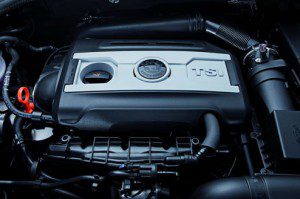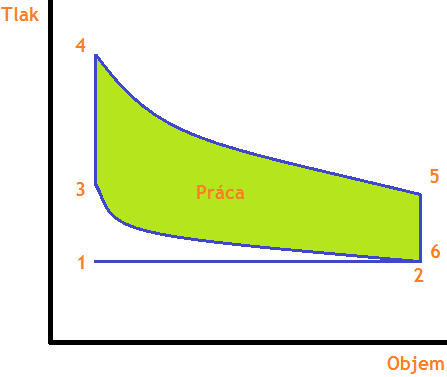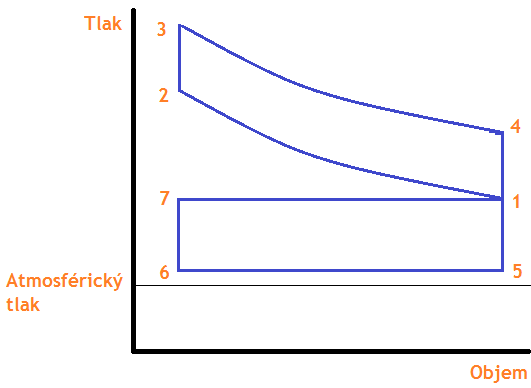
What is abbreviation?
 In recent years, the European Basin has become the least of everything that the average person comes into contact with. This applies in particular to real wages, mobile phones, laptops, company costs or engine size and emissions. Unfortunately, staff cuts have not yet affected such a dilapidated public or state administration. However, the meaning of the word "reduction" in the automotive industry is not as new as it might seem at first glance. At the end of the last century, diesel engines also turned up their cutbacks at the first stage, which, thanks to supercharging and modern direct injection, retained or reduced their volume, but with a significant increase in the dynamic parameters of the engine.
In recent years, the European Basin has become the least of everything that the average person comes into contact with. This applies in particular to real wages, mobile phones, laptops, company costs or engine size and emissions. Unfortunately, staff cuts have not yet affected such a dilapidated public or state administration. However, the meaning of the word "reduction" in the automotive industry is not as new as it might seem at first glance. At the end of the last century, diesel engines also turned up their cutbacks at the first stage, which, thanks to supercharging and modern direct injection, retained or reduced their volume, but with a significant increase in the dynamic parameters of the engine.
The modern era of “dawnsizing” gasoline engines began with the advent of the 1,4 TSi unit. At first glance, this in itself does not look like a downsizing, which was also confirmed by its inclusion in the Golf, Leon or Octavia offering. The change of perspective didn't happen until Škoda started assembling the 1,4kW 90 TSi engine into its largest Superb model. However, the real breakthrough was the installation of the 1,2 kW 77 TSi engine in relatively large cars such as the Octavia, Leon and even the VW Caddy. Only then did the real and, as always, the most wise pub performances begin. Expressions such as: “does not drag on, will not last long, there is no substitute for volume, the octagon has a fabric engine, have you heard that?” Were more than common not only in the fourth price of devices, but also in online discussions. Downsizing requires a logical effort from vehicle manufacturers to cope with the constant pressure to reduce consumption and much-hated emissions. Of course, nothing is free, and even downsizing doesn't just bring benefits. Therefore, in the following lines, we will discuss in more detail what is called downsizing, how it works and what are its advantages or disadvantages.
What is abbreviation and reasons
Downsizing means reducing the displacement of an internal combustion engine while maintaining the same or even higher power output. In parallel with the reduction in volume, supercharging is carried out using a turbocharger or a mechanical compressor, or a combination of both methods (VW 1,4 TSi - 125 kW). As well as direct fuel injection, variable valve timing, valve lift, etc. With these additional technologies, more air (oxygen) for combustion enters the cylinders, and the amount of fuel supplied can be proportionally increased. Of course, such a compressed mixture of air and fuel contains more energy. Direct injection, combined with variable timing and valve lift, in turn optimizes fuel injection and swirl, which further increases the efficiency of the combustion process. In general, a smaller cylinder volume is enough to release the same energy as larger and comparable engines without downsizing.
As already indicated at the beginning of the article, the emergence of reductions is mainly due to the tightening of European legislation. Mostly it is about reducing emissions, while the most visible is the drive to reduce CO emissions across the board.2... However, around the world, emission limits are gradually being tightened. In accordance with a regulation by the European Commission, European automakers have committed to achieve a 2015 g CO emission limit by 130.2 per km, this value is calculated as the average value for the fleet of cars placed on the market over one year. Gasoline engines play a direct role in downsizing even though, in terms of efficiency, they are more likely to reduce consumption (i.e. also CO2) than diesel ones. However, this makes it difficult not only for a higher price, but also for the relatively problematic and expensive elimination of harmful emissions in exhaust gases, such as nitrogen oxides - NOx, carbon monoxide - CO, hydrocarbons - HC or carbon black, for the removal of which an expensive and still relatively problematic DPF filter (FAP) is used. Thus, small diesels are gradually becoming more complex, and small cars are played with smaller violins. Hybrid and electric vehicles are also competing with downsizing. Although this technology is promising, it is much more complex than relatively simple downsizing, and yet too expensive for the average citizen.
Some theory
The success of downsizing depends on engine dynamics, fuel consumption and overall driving comfort. Power and torque come first. Productivity is work done over time. The work presented during one cycle of a spark ignition internal combustion engine is determined by the so-called Otto Cycle.

The vertical axis is the pressure above the piston, and the horizontal axis is the volume of the cylinder. The work is given by the area bounded by the curves. This diagram is idealized because we do not take into account the heat exchange with the environment, the inertia of the air entering the cylinder, and the losses caused by intake (slight negative pressure compared to atmospheric pressure) or exhaust (slight overpressure). And now a description of the story itself, shown in the (V) diagram. Between points 1-2, the balloon is filled with a mixture - the volume increases. Between points 2-3, compression occurs, the piston works and compresses the fuel-air mixture. Between points 3-4, combustion occurs, the volume is constant (the piston is at top dead center), and the fuel mixture burns. The chemical energy of the fuel is converted into heat. Between points 4-5, the burnt mixture of fuel and air does work - expanding and exerting pressure on the piston. In paragraphs 5-6-1, the reverse flow occurs, that is, the exhaust.
The more we suck in the fuel-air mixture, the more chemical energy is released, and the area under the curve increases. This effect can be achieved in several ways. The first option is to adequately increase the volume of the cylinder, respectively. the whole engine, which under the same conditions we achieve more power - the curve will increase to the right. Other ways to shift the rise of the curve up are, for example, increasing the compression ratio or increasing the power to work over time and doing several smaller cycles at the same time, that is, increasing the engine speed. Both methods described have many disadvantages (self-ignition, higher strength of the cylinder head and its seals, increased friction at higher speeds - we will describe later, higher emissions, force on the piston is still about the same), while the car has a relatively big power gain on paper, but torque doesn't change much. Recently, although the Japanese Mazda managed to mass-produce a gasoline engine with an unusually high compression ratio (14,0: 1) called Skyactive-G, which boasts very good dynamic parameters with favorable fuel consumption, nevertheless, most manufacturers still use one possibility is to increase the volume of the area under the curve. And this is to compress the air before entering the cylinder while maintaining volume - overflow.
Then the p (V) diagram of the Otto cycle looks like this:

Since charge 7-1 occurs at a different (higher) pressure than outlet 5-6, a different closed curve is created, which means that additional work is performed in the inoperative piston stroke. This can be used if the device that compresses the air is powered by some excess energy, which in our case is the kinetic energy of the exhaust gases. Such a device is a turbocharger. A mechanical compressor is also used, but it is necessary to take into account a certain percentage (15-20%) spent on its operation (most often it is driven by the crankshaft), therefore, part of the upper curve shifts to the lower one without any effect.
We will come for a while, while we are overwhelmed. Aspirating a gasoline engine has been around for a long time, but the main goal was to increase performance, while the consumption was not particularly decided. So gas turbines dragged them along for their lives, but they also ate grass by the road, pressing on the gas. There were several reasons for this. First, reduce the compression ratio of these engines in order to eliminate knock-knock combustion. There was also a turbo cooling issue. At high loads, the mixture had to be enriched with fuel to cool the exhaust gases and thus protect the turbocharger from high flue gas temperatures. To make matters worse, the energy supplied by the turbocharger to the charge air is partially lost at partial load due to the braking of the air flow at the throttle valve. Fortunately, current technology is already helping to reduce fuel consumption even when the engine is turbocharged, which is one of the main reasons for downsizing.
Designers of modern gasoline engines are trying to inspire those diesel engines that operate at a higher compression ratio and at part load, the air flow through the intake manifold is not limited by the throttle. The danger of knocking-knocking caused by a high compression ratio, which can destroy an engine very quickly, is eliminated by modern electronics, which control the ignition timing much more precisely than was the case until recently. A big advantage is also the use of direct fuel injection, in which gasoline evaporates directly in the cylinder. Thus, the fuel mixture is effectively cooled, and the self-ignition limit is also increased. Mention should also be made of the currently widespread system of variable valve timing, which allows you to influence the actual compression ratio to a certain extent. The so-called Miller cycle (unevenly long contraction and expansion stroke). In addition to variable valve timing, variable valve lift also helps to reduce consumption, which can replace throttle control and thus reduce suction losses - by slowing air flow through the throttle (eg Valvetronic from BMW).
Overcharging, changing valve timing, valve lift or compression ratio are not a panacea, so designers must consider other factors that, in particular, affect the final flow. These include, in particular, the reduction of friction, as well as the preparation and combustion of the incendiary mixture itself.
Designers have been working for decades to reduce the friction of moving engine parts. It must be admitted that they have made great strides in the field of materials and coatings, which currently have the best friction properties. The same can be said about oils and lubricants. The engine design itself was not left without attention, where the dimensions of moving parts, bearings are optimized, the shape of the piston rings and, of course, the number of cylinders have not changed. Probably the best-known engines with "lower" number of cylinders at present are Ford's three-cylinder EcoBoost engines from Ford or TwinAir two-cylinders from Fiat. Fewer cylinders means fewer pistons, connecting rods, bearings, or valves, and therefore logically total friction. There are certainly some limitations in this area. The first is the friction that is stored on the missing cylinder, but offset to some extent by additional friction in the balance shaft bearings. Another limitation is related to the number of cylinders or operating culture, which significantly affect the choice of the category of vehicle that the engine will drive. Currently unthinkable, for example, BMW, known for its modern engines, was equipped with a humming twin-cylinder engine. But who knows what will happen in a few years. Since friction increases with the square of speed, manufacturers not only reduce the friction itself, but also try to design engines to provide sufficient dynamics at the lowest possible speeds. Since atmospheric refueling of a small engine cannot cope with this task, a turbocharger or a turbocharger combined with a mechanical compressor again comes to the rescue. However, in the case of supercharging only with a turbocharger, this is not an easy task. It should be noted that the turbocharger has a significant turbine rotational inertia, which creates the so-called turbodiera. The turbocharger turbine is driven by exhaust gases, which must first be produced by the engine, so that there is a certain delay from the moment the accelerator pedal is depressed to the expected start of engine thrust. Of course, various modern turbocharging systems try to more or less successfully compensate for this ailment, and new design improvements in turbochargers come to the rescue. So turbochargers are smaller and lighter, they respond faster and faster at higher speeds. Sport-oriented drivers, brought up on high-speed engines, blame such a “slow-speed” turbocharged engine for poor response. no power gradation as speed increases. So the engine pulls emotionally at low, mid and high revs, unfortunately without peak power.
The composition of the combustible mixture itself did not stand aside. As you know, a gasoline engine burns the so-called homogeneous stoichiometric mixture of air and fuel. This means that for 14,7 kg of fuel - gasoline there is 1 kg of air. This ratio is also referred to as lambda = 1. Said mixture of gasoline and air can also be burned in other ratios. If you use the amount of air from 14,5 to 22: 1, then there is a large excess of air - we are talking about the so-called lean mixture. If the ratio is reversed, the amount of air is less than stoichiometric and the amount of gasoline is greater (the ratio of air to gasoline is in the range of 14 to 7:1), this mixture is called so-called. rich mixture. Other ratios outside this range are difficult to ignite because they are too dilute or contain too little air. In any case, both limits have opposite effects on performance, consumption and emissions. In terms of emissions, in the case of a rich mixture, a significant formation of CO and HC occurs.x, production NOx relatively low due to the lower temperatures when burning a rich mixture. On the other hand, NO production is especially higher with lean burn combustion.xdue to the higher combustion temperature. We must not forget about the burning rate, which is different for each composition of the mixture. The burning rate is a very important factor, but it is difficult to control it. The combustion rate of the mixture is also affected by temperature, degree of swirl (maintained by engine speed), humidity and fuel composition. Each of these factors is involved in different ways, with swirl and saturation of the mixture having the greatest influence. A rich mixture burns faster than a lean one, but if the mixture is too rich, the burning rate is greatly reduced. When the mixture is ignited, combustion is slow at first, with increasing pressure and temperature, the burning rate increases, which is also facilitated by increased swirling of the mixture. Lean burn combustion contributes to an increase in combustion efficiency of up to 20%, while, according to current capabilities, it is maximum at a ratio of about 16,7 to 17,3: 1. Since mixture homogenization deteriorates during continued lean, resulting in significant reducing the burning rate, reducing efficiency, and productivity, manufacturers have come up with the so-called layering mixture. In other words, the combustible mixture is stratified in the combustion space, so that the ratio around the candle is stoichiometric, that is, it is easily ignited, and in the rest of the environment, on the contrary, the composition of the mixture is much higher. This technology is already being used in practice (TSi, JTS, BMW), unfortunately, so far only up to certain speeds or. in light load mode. However, development is a fast step forward.
Benefits of reduction
- Such an engine is not only smaller in volume, but also in size, so it can be produced with less raw materials and less energy consumption.
- Since engines use similar, if not the same raw materials, the engine will be lighter due to its smaller size. The entire vehicle structure can be less robust and therefore lighter and cheaper. with the existing lighter engine, less axle load. In this case, driving performance is also improved, since they are not so strongly influenced by a heavy engine.
- Such an engine is smaller and more powerful, and therefore it will not be difficult to build a small and powerful car, which sometimes did not work due to the limited engine size.
- The smaller motor also has less inertial mass, so it does not consume as much power to move during power changes as the larger motor.
Disadvantages of reduction
- Such a motor is subjected to significantly higher thermal and mechanical stress.
- Although the engine is lighter in volume and weight, due to the presence of various additional parts such as a turbocharger, intercooler or high pressure gasoline injection, the total weight of the engine increases, the cost of the engine increases, and the entire kit requires increased maintenance. and the risk of failure is higher, especially for a turbocharger that is subject to high thermal and mechanical stress.
- Some auxiliary systems consume energy in the engine (eg direct injection piston pump for TSI engines).
- The design and manufacture of such an engine is much more difficult and complex than in the case of an atmospheric filled engine.
- The final consumption is still relatively heavily dependent on the driving style.
- Internal friction. Keep in mind that engine friction is speed dependent. This is relatively negligible for a water pump or alternator where friction increases linearly with speed. However, the friction of the cams or piston rings increases in proportion to the square root, which can cause a high-speed small motor to exhibit higher internal friction than a larger volume running at lower speeds. However, as already mentioned, a lot depends on the design and performance of the engine.
So is there a future for staff cuts? Despite some shortcomings, I think so. Naturally aspirated engines don't disappear right away, however, simply because of production savings, advances in technology (Mazda Skyactive-G), nostalgia, or habit. For non-partisans who do not trust the power of a small engine, I recommend loading such a car with four well-fed people, then looking up the hill, overtaking and testing. Reliability remains a much more complex issue. There is a solution for ticket buyers, even if it takes longer than a test drive. Wait a few years for the engine to appear and then decide. Overall, however, the risks can be summarized as follows. Compared to a more powerful naturally aspirated engine of the same power, the smaller turbocharged engine is much more heavily loaded with cylinder pressure as well as temperature. Therefore, such engines have significantly more loaded bearings, a crankshaft, a cylinder head, switchgear, etc. However, the risk of failure before the planned service life has expired is relatively low because manufacturers design motors for this load. However, there will be errors, I note, for example, problems with the timing chain skipping in TSi engines. Overall, however, it can be said that the lifespan of these engines will probably not be as long as in the case of naturally aspirated engines. This mainly applies to cars with high mileage. Increased attention should also be paid to consumption. Compared to older turbocharged gasoline engines, modern turbochargers can operate significantly more economically, while the best of them correspond to the consumption of a relatively powerful turbo diesel in economical operation. The downside is the ever-growing dependence on the driver's driving style, so if you want to drive economically, you need to be careful with the gas pedal. However, compared to diesel engines, turbocharged gasoline engines make up for this disadvantage with better refinement, lower noise levels, wider usable speed range or lack of the much-criticized DPF.
